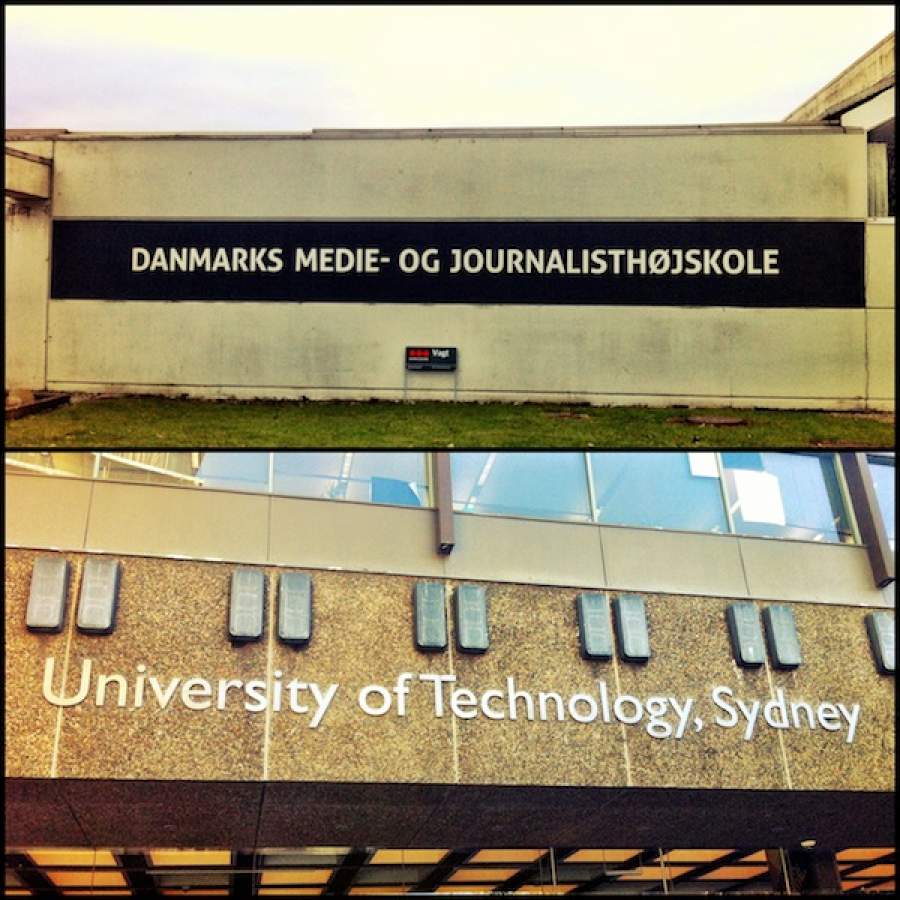People have hobbies that can range from collecting coins and stamps to all colours of nail polish, but it seems like I have developed a somewhat unique hobby. I have become a bit of a student ID collector. In Aarhus, Denmark, I was taking classes both at Aarhus University and the Danish School of Media and Journalism. Now, I have a shiny, new University of Technology, Sydney (UTS) ID on which my face looks unflatteringly elongated. My good ol’ Ryerson card is also nicely preserved at my Mum’s place in Toronto.
Now, this doesn’t make me an expert and I haven’t conducted any empirical research (although I might one day), but in the last four weeks that I’ve been studying in Sydney, I couldn’t help but notice the differences in the educational cultures between Australia and Denmark. Denmark was a lot more theoretical with assignments grounded in research; Australia is much more practical as I am already shooting television journalism stories. Denmark was very egalitarian; Australian students are much more competitive. Danish professors maintain a hierarchal distance with their students; but I am already tweeting at my Aussie profs.
Just to make sure that my observations were echoed by other students, I chatted with two of my friends about this: Carrington, an Aussie bloke who did an exchange at my Danish uni, and Fanny, a French student who is currently in Australia. Here’s what they had to say:
Australia vs. Europe: what do you think about the teaching content?
Carrington: I found the program in Denmark to be heavily theoretical. My experience in Australia had been that you study what is directly applicable to your field.
Fanny: France is much more theoretical than Australia. Also, in France we have a lot more subjects and coursework and we don’t get to choose our subjects. The program is rigid and your courses are decided for you. However, in Australia you basically design your own curriculum.
Australia vs. Europe: student-teacher relationships?
Carrington: Denmark profs were quite rigid about things like punctuality and other rules. They are also less approachable. When I got to Denmark, I asked to meet a prof for coffee to get up to speed on the classes I had missed, but he declined saying that he had already said no to some students, so he couldn’t say yes to me. They are really egalitarian.
Fanny: In France, the professor is someone really important and busy. They won’t know who you are because there are 200 other students in the class. In Australia, the profs really try to make you feel comfortable in the class and I like that—but I am not used to that approach!
Are there any other major differences that you noticed while on exchange?
Carrington: I found that a lot of students in my MA program were quite young. They were doing their masters right after their undergraduate, which in my opinion is not the point of a master’s degree.
Fanny: I feel studying in France is harder, grades-wise. The professors will put trick questions on the exam just to weed out the students that don’t deserve to be there. In Australia, they help everyone and answer any questions we may have to make it simpler for us.
I agree with most of their points, but I can’t make up my mind regarding what style of teaching I prefer. I am well on my way to being a perpetual student, so it’s a good thing I enjoy both.
And here comes the advice section: when choosing where you may want to do your exchange semester, take these things into consideration. I would recommend trying out a different teaching style than you are used to. Maybe, you’ll like it a lot, maybe you’ll hate it, but at least you can see how our other global peers learn.
So, which educational style are you leaning towards?

